- Home
- Prelims
- Mains
- Current Affairs
- Study Materials
- Test Series
Feb 13, 2022
TAX ON DIGITAL ASSETS COULD GO UP, GOVT MULLING GST ON CRYPTO MINING, SUPPLY
The government is examining the applicability of goods and services tax (GST) on various cryptocurrency transactions including mining of these digital assets.

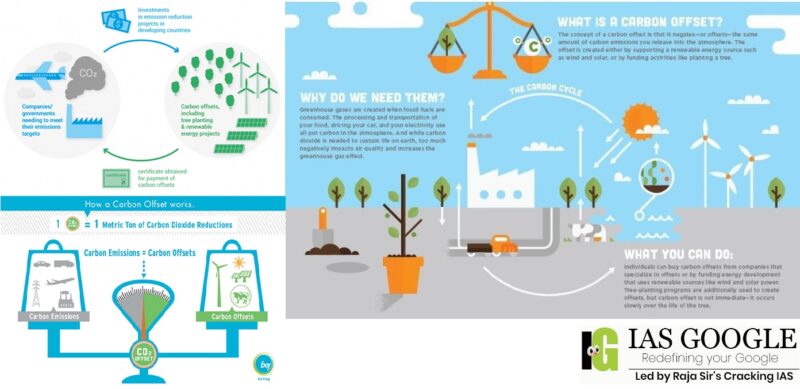

 New Pension Scheme?
New Pension Scheme?
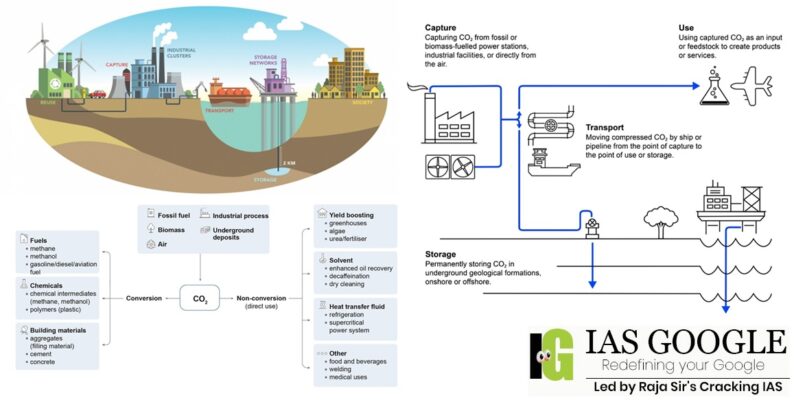 Carbon Capture Utilisation and Storage CCUS
Carbon Capture Utilisation and Storage CCUS
 Recently, the Telangana Rashtra Samithi (TRS) MPs gave a notice in Rajya Sabha for moving a privilege motion against Prime Minister Narendra Modi over his remarks on the passage of the Andhra Pradesh bifurcation bill in 2014 that led to the formation of Telangana.
Recently, the Telangana Rashtra Samithi (TRS) MPs gave a notice in Rajya Sabha for moving a privilege motion against Prime Minister Narendra Modi over his remarks on the passage of the Andhra Pradesh bifurcation bill in 2014 that led to the formation of Telangana.
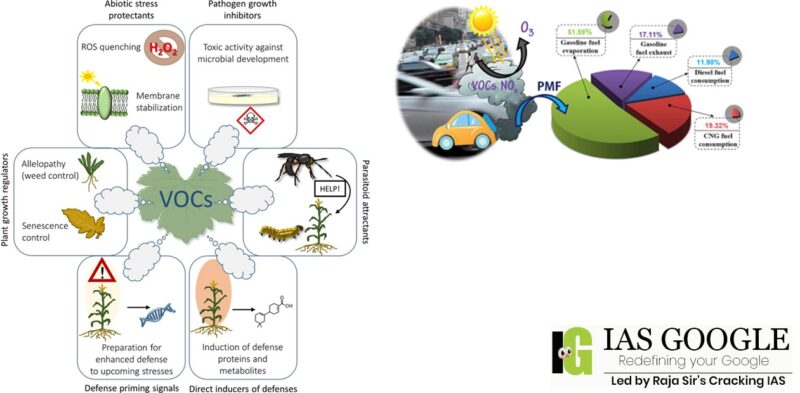 VOLATILE ORGANIC COMPOUNDS - VOCs
VOLATILE ORGANIC COMPOUNDS - VOCs
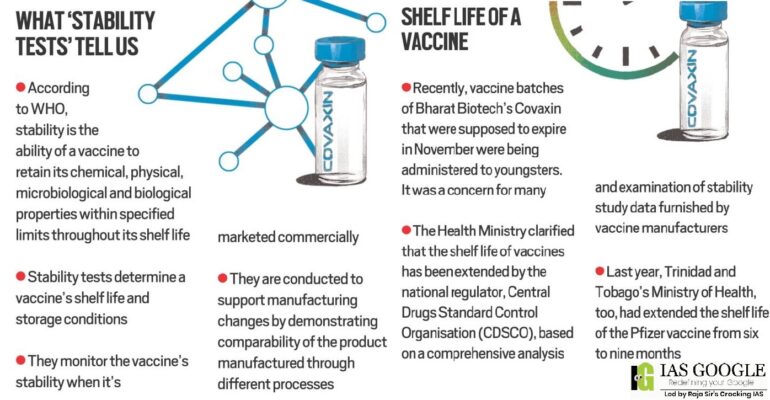 How is the expiry date determined?
How is the expiry date determined?
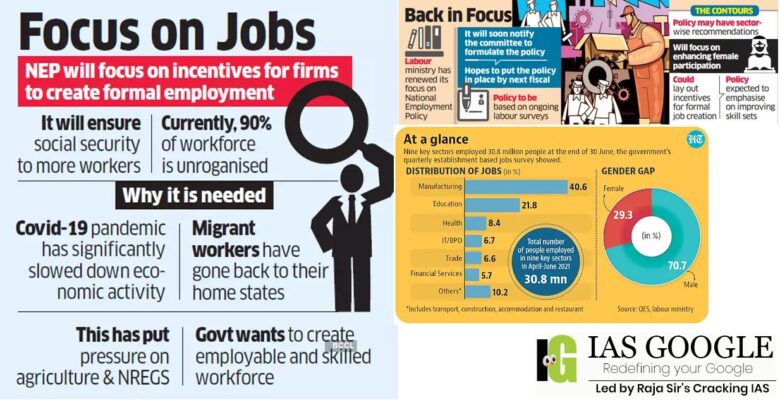 Why National Employment Policy?
Why National Employment Policy?
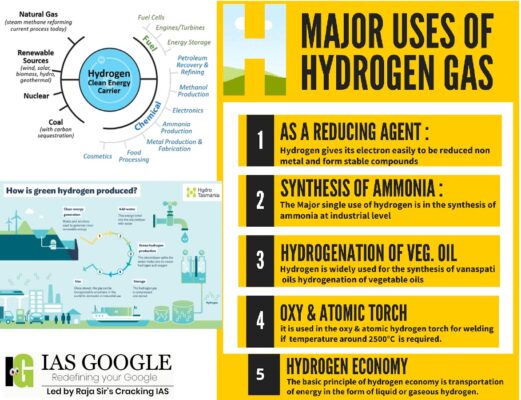 Hydrogen Energy production?
Hydrogen Energy production?
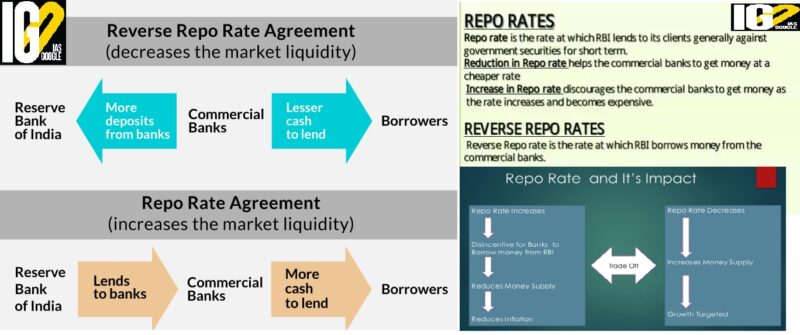 Highlights:
No change in Repo rate
Highlights:
No change in Repo rate

- The issue is being examined internally at the Central Board of Indirect Taxes and Customs (CBIC) and a proposal will be taken to the GST Council, CBIC chairman Vivek Johri said.
- There are several aspects of the operation which intersect with GST as a tax.
- The budget has proposed a flat 30% capital gains tax on virtual digital currencies beginning.

- They have all made zero emissions, net zero or carbon-neutral pledge under the hood of ambiguity, a lack of real ambition and an overdependence on controversial courts like carbon offsets.
- NCI found that the pledges in reality only commit to reduce emissions by 40 per cent on average, not 100 per cent as suggested by the terms ‘net zero’ and ‘carbon neutral’.
- Carbon offsets are credits for reductions in greenhouse gas emissions made at other locations, such as wind farms which create renewable energy and reduce the need for fossil-fuel powered energy.
- Carbon offsets are quantified and sold in metric tonnes of carbon dioxide equivalent (CO2e).
- Buying one tonne of carbon offsets means there will be one less tonne of carbon dioxide in the atmosphere than there would otherwise have been.
- Carbon offsets send a direct market signal by putting economic value on a commodity that has historically not been priced.
- For a carbon offset to be credible it must meet essential quality criteria, that it will be retired from the carbon market so it cannot be double counted, and that it addresses issues such as permanence and leakage.
- Projects that are issued offset allowances to trade on the voluntary market have to meet the registry’s rules and requirements.
- follow specific third-party approved methodologies
- monitor emission reductions and avoidances
- be validated/verified by third parties.
- Carbon offsets have a diverse plethora of project types that can aid a company in not only reducing its emissions but also build a narrative such as: ecosystem preservation, gender equality, improving impoverished communities, safe drinking water, etc.
- It also often delivers added benefits at the project site, such as employment opportunities, community development programmes and training and education.
- Not a fix-all solution for reducing corporate GHG emissions.
- offsets are a cost and do not have a financial return-on-investment compared to other operational efficiencies such as on-site solar.
- It can be viewed as “green washing” if used improperly.
- The other limitations of offsets concern target setting.
- The regulatory climate is always changing and could endanger long-term strategies centered around offsets. For these reasons, Inogen Alliance recommends that carbon offsets be considered just one tool used within the overall decarbonization strategy.
- Carbon offsets paired with renewable energy certificates, power purchase agreements, and operational changes such as: energy efficiency, on-site renewables, down-sizing, and green product sourcing can be a powerful tool in reaching carbon-neutrality.
- ‘Net zero’ implies that all of a company’s GHG — mainly carbon dioxide (CO2) — emissions are cancelled out by an equivalent volume of emissions captured or absorbed, resulting in net emissions being zero.
- Net zero emission means that all man- made greenhouse gas emissions must be removed from the atmosphere through reduction measures, thus reducing the Earth’s net climate balance, after removal via natural and artificial sink to zero.
- This way humankind would be carbon neutral and global temperature would stabilise.

- This is according to latest research conducted by a group of scientists from the Indian Institute of Tropical Meteorology, Pune, Maharashtra and Tezpur University in Tezpur, Assam.
- The research published in the journal Agricultural and Forest Meteorology February 9, 2022, showed that as the planet warms further, the ability of the Kaziranga National Park to absorb carbon would further decrease.
- Kaziranga National Park lies partly in Golaghat District and partly in Nagaon District of Assam.
- It is the oldest park in assam along the river Brahmaputra on the North and the Karbi Anglong hills on the South.
- Kaziranga was designated a UNESCO World Heritage site in 1985.
- It is famous for the Great Indian One-horned Rhinoceros.
- The landscape of Kaziranga is of sheer forest, tall elephant grass, rugged reeds, marshes & shallow pools.
- It was declared a National Park in 1974.
- Kaziranga with Tiger Reserve also attracts Ganges Dolphin.
- The soil of deciduous forest is home to a large population of bacteria that release carbon dioxide as they breathe, which adds to the carbon dioxide being emanated by other organisms, including trees.
- The group found that Kaziranga absorbed the most amount of carbon dioxide during the pre-monsoon season of March, April and May.
- The photosynthetic activity of trees during the monsoon decreases due to increased cloud cover. Hence, the ability of the forest to absorb carbon dioxide also decreases.
- The situation remains the same during the post-monsoon and winter months, making the forest a net carbon emitter.
- Another observation was the existence of a greater number of heavier isotopes in the water being released by the trees, through a process known as transpiration.
- Isotopes of an element, in this case hydrogen and oxygen, have the same atomic number but with different atomic mass.
- The scientists observed a strong link between the water and carbon cycles of the forest.
- They also witnessed a decreasing trend in the rainfall coming from the transpired water in the pre-monsoon months which are responsible for the highest carbon absorption.
- It is native to the Indian subcontinent.
- It is listed as Vulnerable on the IUCN Red List.
- Globally, Indian Rhinoceros (Rhinoceros unicornis) has been listed in CITES Appendix I since 1975.
- Nearly 85% of the global Indian rhinoceros' population is concentrated in Assam, where Kaziranga National Park contains 70% of rhino population.
- As a result of habitat destruction and climatic changes its range has gradually been reduced so that by the 19th century, it only survived in the Terai grasslands of southern Nepal, northern Uttar Pradesh, northern Bihar, northern West Bengal, and in the Brahmaputra Valley of Assam.
 New Pension Scheme?
New Pension Scheme?
- The scheme, now referred to as the National Pension System (NPS), was introduced by the Centre for all appointments after January 1, 2004.
- The NPS is regulated under the PFRDA (The Pension Fund Regulatory & Development Authority) Act, 2013.
- Under the NPS, every government employee is allotted a Permanent Retirement Account Number, and has to mandatorily contribute 10% of pay and dearness allowance to the pension fund, which is matched by the government. This money can then be invested by fund managers.
- After the latest amendment, in 2019, the government share of the contribution has been raised to 14% from 10%.
- At superannuation, the employee can withdraw 60% of the corpus but is required to invest at least 40% to purchase an annuity from an insurance firm regulated and registered by government authorities.
- The interest on the annuity is to be provided as a monthly pension to the employee.
- The basic difference is that the NPS is a contribution-based pension system.
- Under the old system, pension was fixed as 50% of the last basic salary drawn, along with other benefits. Hence, the benefit due was defined beforehand.
- In the case of NPS, the pension benefit is determined by factors such as the amount of contribution made, the age of joining, type of investment, and the income drawn from that investment.
- Any Indian citizen can open the NPS account.
- The minimum age eligibility for opening the NPS account is 18 years whereas the maximum age limit for opening the NPS account is 65 years.
- The applicant should be KYC compliant.
- The applicant should both have any pre-existing NPS account.
- Non-Residential Indians (NRIs) can also open an NPS account and can make full use of the benefits they carry.
- The individual should age between 18 years -60 years.
- The individual must complete the KYC norms.
- OCIs and PIOs are not eligible.
- The contribution towards the national pension scheme should come either from an NRE or NRO account.
- Almost all states and UTs barring Delhi, Chandigarh, Chhattisgarh, Madhya Pradesh, Telangana and Jharkhand have either land border or coastal states and hence are important stakeholders in the Border Management function.
- Historically inherited territorial disputes involving its two nuclear armed neighbours, over which five wars have already been fought.
- Unconventional war between sides whose military power differs greatly, waged by the weaker side using non-traditional means like terrorism.
- War waged by a country using means other than established forms of armed conflict, to make the adversary capitulate even without a classical war (economic wars, water wars, legal wars etc.)
- Technological/ Informational warfare – combination of cyber, space, electronic, propaganda, psychological, media and social media wars.
- Currently, military planning is hamstrung by lack of a clearly articulated and integrated military strategy.
- Lack of modernisation. An alarmingly large percentage of equipment is of old vintage, due to many proposals for acquisition and upgradation of new equipment having been inordinately delayed.
- Expanding hollowness in arms and ammunition over the years, due to quality issues related to indigenous production of modern ammunition, compounded by inadequate budgetary support.
- The Army of the future will have to be technologically oriented, with many more specialists, as compared to generalists.
- Inefficiency and apparent lack of accountability of various organs of the Defence Ministry responsible for indigenous design and manufacture of weapons, equipment and ammunition for the Army, namely the Defence Research and Development Organisation (DRDO), Ordnance Factory Board (OFB) and Defence Public Sector Units (DPSUs).
- Smooth movement of people and trade can be implemented by adopting technologies like use of Biometric data and AI which is used at smart borders to identify people and run random security checks.
- Maintaining and sustaining new technological solutions will require upgradation of skill of the existing manpower to be bridged by use of contractors in the interim and also reviewing the recruitment intake e.g., AI, Machine Learning, counter-drone technologies etc.
- The BGFs, dealing with the border population, need to be gender sensitive and more responsible. Hence, incorporation of Mahila Police is an essential component.
- An adverse incident can snowball out of proportion in both countries, hence narrative building and force sensitisation of the nuances of border management are essential to achieve a strategic communication strategy.
- A three-to-four-fold increase in the Capital outlays is required for the BGFs to modernise and adopt Smart Border Management solutions augmented by a quick responsive force and legal cooperation with the respective state agencies.
- Good political relations enable better coordination between border guarding forces and ease of living in the border population and expansion in trade. A coordinated and strong state administration on the border augmented by the border guarding forces will prevent the exploitation of economically marginalised by transborder syndicates.
- India needs to progressively build capability of hard military power, soft power and demonstrated power in its quest to be recognised as a ‘regional power with global influence’, which can deter threats to its stability and integrity. The Army, as the largest component of the Indian military, has to be prepared to play its mandated role in the interests of defence and security of the country.
 Carbon Capture Utilisation and Storage CCUS
Carbon Capture Utilisation and Storage CCUS
- Carbon capture, utilisation and storage (CCUS) refers to a suite of technologies that can play an important and diverse role in meeting global energy and climate goals.
- CCUS involves the capture of CO2 from large point sources, including power generation or industrial facilities that use either fossil fuels or biomass for fuel.
- The CO2 can also be captured directly from the atmosphere.
- If not being used on-site, the captured CO2 is compressed and transported by pipeline, ship, rail or truck to be used in a range of applications, or injected into deep geological formations (including depleted oil and gas reservoirs or saline formations) which trap the CO2 for permanent storage.
- In the IEA Sustainable Development Scenario, in which global CO2 emissions from the energy sector fall to zero on a net basis by 2070, CCUS accounts for nearly 15% of the cumulative reduction in emissions compared with the Stated Policies Scenario.
- The primary focus involves understanding the role of CO2 in the global climate and mitigation strategies of the CO2 emitted from the industrial and energy sector, ranging from advances in capture technologies to subsequent utilization of captured CO2.
- CCUS is a crucial climate change mitigation solution that is constantly advancing in its technology readiness levels for operational feasibility and economic viability.
- In the Sustainable Development Scenario an initial focus of CCUS is on retrofitting fossil fuel-based power and industrial plants.
- By 2030, more than half of the CO2 captured is from retrofitted existing assets.
- Global hydrogen use in the Sustainable Development Scenario increases sevenfold to 520 mega tonnes (Mt) by 2070.
- The majority of the growth in low-carbon hydrogen production is from water electrolysis using clean electricity, supported by 3 300 gigawatts (GW) of electrolysers (from less than 0.2 GW today).
- The remaining 40% of low-carbon hydrogen comes from fossil-based production that is equipped with CCUS, particularly in regions with access to low-cost fossil fuels and CO2 storage.
- Heavy industries account for almost 20% of global CO2 emissions today. CCUS is virtually the only technological solution for deep emissions reductions from cement production.
- By 2070, nearly half of global energy demand for aviation is met by synthetic fuels, requiring the capture of around 830 Mt of CO2 for use as feedstock.
- When net-zero emissions are reached in the Sustainable Development Scenario, 2.9 giga tonnes (Gt) of emissions remain, notably in the transport and industry sectors.
- These lingering emissions are offset by capturing CO2 from bioenergy and the air and storing it.
- DST aims to nurture the area of Carbon Capture, Utilization, and Storage through emphasis on research and development, and capacity building of both human resources and infrastructure. The objective is to evolve technologies and methodologies that address issues related to high capital costs, safety, logistics and high auxiliary power consumption.
- Globally, power and industry account for about 50% of all greenhouse gas (GHG) emissions. The Carbon Capture, Utilization, and Storage (CCUS) programme aim to reduce carbon emission by either storing or reusing, so that captured carbon dioxide does not enter the atmosphere. The new Center, the IIT Bombay statement said, will act as a multi-disciplinary, long-term research and development, collaboration, and capacity-building hub in Carbon Capture and Utilization.
 Recently, the Telangana Rashtra Samithi (TRS) MPs gave a notice in Rajya Sabha for moving a privilege motion against Prime Minister Narendra Modi over his remarks on the passage of the Andhra Pradesh bifurcation bill in 2014 that led to the formation of Telangana.
Recently, the Telangana Rashtra Samithi (TRS) MPs gave a notice in Rajya Sabha for moving a privilege motion against Prime Minister Narendra Modi over his remarks on the passage of the Andhra Pradesh bifurcation bill in 2014 that led to the formation of Telangana.
- The statement attempts to show the Parliament Houses in the worst and contemptuous manner, denigrating and demeaning the procedures and proceedings of the House and its functioning.
- The Andhra Pradesh Reorganization Act, 2014, bifurcated the state of Andhra Pradesh into Telangana and Andhra Pradesh following the Telangana movement.
- The bill was passed in the Lok Sabha on February 18, 2014 and in the Rajya Sabha two days later. The Telangana state was officially formed on June 2, 2014.
- All Members of Parliament (MPs) enjoy rights and immunities, individually and collectively, so that they can discharge their duties and functions effectively.
- Any instance when these rights and immunities are disregarded by any member of Lok Sabha or Rajya Sabha is an offence, called ‘breach of privilege’, which is punishable under the Laws of Parliament.
- Any member from either house can move a notice in the form of a motion against the member who he/she thinks is guilty of breach of privilege.
- Both Houses of Parliament reserve the right to punish any action of contempt (not necessarily breach of privilege) which is against its authority and dignity, as per the laws.
- The rules governing the privilege are mentioned in Rule No 222 in Chapter 20 of the Lok Sabha Rule Book and Rule 187 in Chapter 16 of the Rajya Sabha rulebook.
- The rules explain that any member of the House may, with the consent of the Speaker or the Chairperson, raise a question involving an incident that he or she considers a breach of privilege either of a member or of the House or of a committee.
- The notice has to be about a recent incident and should need the intervention of the House.
- These notices have to be submitted before 10 am to the Speaker or the Chairperson of the House.
- The speaker of Lok Sabha and the Chairperson of Rajya Sabha are the first level of scrutiny of a privilege motion in the two Houses of Parliament.
- They can either take a decision on the privilege motion or can also refer it to the privileges committee of Parliament.
- Once the Speaker or the House Chairperson gives consent under Rule 222, the concerned member is allowed to explain himself or herself.
- The Speaker of Lok Sabha nominates a committee of privileges consisting of 15 members of parliament from each party.
- The report prepared by the committee is submitted to the House for its consideration.
- The Speaker may also allow a half-hour debate on the report by the committee before passing orders or directing that the report be tabled before the House.
- The Arya Vysya community has been petitioning governments for several years to ban the play, saying it portrays them in a negative light.
- The play is exhibited across the state, mainly in rural areas, during festivals and fairs.
- ‘Chintamani Padya Natakam’ was written in 1920 by playwright Kallakuri Narayana Rao, who was also a social reformer.
- The play is about Chintamani, a courtesan and a devotee of Lord Krishna, who finds salvation by singing bhajans.
- She is courted by Subbi Shetty, a businessman from the Arya Vysya community, who loses his wealth and family due to his attraction to Chintamani.
- The original play had a social message, but over the years, it has been modified purely for entertainment.
- Much of the play sees the central character Subbi Shetty made fun of, especially for losing all his wealth to his vices.
- Arya Vysya community leaders say the content and dialogues are offensive, and they are ridiculed about their appearance through the character, who is always portrayed as a short and dark-coloured person.
- The play has undergone many changes over the decades, and to make it more entertaining and funnier, crude and vulgar language is used in many places, drawing the ire of the community.
 VOLATILE ORGANIC COMPOUNDS - VOCs
VOLATILE ORGANIC COMPOUNDS - VOCs
- VOCs are carbon-containing chemicals released by petrol and diesel vehicles. They impact air quality and human health.
- VOCs can have a natural origin. Plants emit these chemicals to attract pollinators, defend themselves from pests and predators and adapt to environmental stress.
- Human-made VOCs are a cause for concern, yet they don’t draw enough attention.
- Benzene, a chemical that induces cancer, is the only VOC included in the ambient air-quality standards.
- VOCs can irritate the eyes, nose and throat, damage body organs and cause cancer.
- VOCs can drive the formation of other dangerous pollutants e.g., reaction with sunlight and nitrogen dioxide to form ground-level ozone that triggers health problems such as cough, difficulty breathing and increases the risk of infections.
- VOCs also trigger the formation of PM2.5, a pollutant that reaches deep into the lungs, affecting their normal functioning.
- Adoption of electric vehicles.
- This intervention could lower the emissions of black carbon — a sooty black material coming from gas and diesel-powered vehicles — by 50 per cent.
- Use paints with low VOCs in public or private institutions as well as at home e.g., technical paints or green paints.
- Promote vertical farming in your vicinity.
- The biggest factor to consider when reducing VOC exposure is the off-gassing process through cross-ventilation indoor.
- Installing air purifiers near a workspace is a good way to lower the concentration of dangerous chemicals in the air.
- Private hospitals administered only 4-5 per cent of the 1.7 billion doses given in India since the vaccination drive began January 17, 2021, according to Economic Survey 2021-22.
 How is the expiry date determined?
How is the expiry date determined?
- As the vaccine is being developed, it is stored at different temperatures for different periods of time. It is then physically characterised, based on various parameters.
- Versions of the product, stored at varying temperatures for different durations, are injected into animals to see if it raises an adequate number of antibodies.
- Date of expiry for both Covaxin and Covishield was extended last year by the Central Drugs Standard Control Organization (CDSCO) from nine months to 12 months after manufacture, based on shelf life and stability.
- A stability test is conducted to determine “acceptable quality, effectiveness and safety for a certain period of time under certain preservation conditions” of a vaccine. This also provides data to help regulate the shelf life of a vaccine.
- Vaccines are complex mixtures of proteins, carbohydrates, lipids, inactivated virus, or adjuvants —which are substances that are intended to enhance immune response and subsequent clinical efficacy of the vaccine. These together contribute to overall vaccine efficacy and safety.
- The shelf life of a vaccine is a reflection of how long the vaccine retains its potency and stability at a given storage temperature and therefore its effectiveness. The shelf life is used to establish the expiry date of each batch of the vaccine product.
- Wastage of vaccines at large.
- Nigeria was forced to destroy a million doses of the AstraZeneca vaccine because they were past their expiry date. Indonesia witnessed a similar fate. Around 100 million doses were rejected in December 2021 because they were too close to their expiry date, according to UNICEF officials.
- Increasing issue of generation of Bio-medical waste.
- Surveys carried out by various agencies show that the health care establishments in India are not giving due attention to their waste management.
- It is India’s only indigenous Covid-19 vaccine.
- Developed by Bharat Biotech, Hyderabad in collaboration with the Indian Council of Medical Research’s National Institute of Virology, Pune.
- It is an inactivated vaccine which is developed by inactivating (killing) the live microorganisms that cause the disease.
- This destroys the ability of the pathogen to replicate, but keeps it intact so that the immune system can still recognise it and produce an immune response.
- It is expected to target more than just the spike protein.
- It also aims to develop an immune response to the nucleocapsid protein (the shell of the virus that encloses its genetic material).
- It is the name given to an Oxford-AstraZeneca Covid-19 vaccine candidate which is technically referred to as AZD1222 or ChAdOx 1 nCoV19.
- It is a version of the vaccine developed by the University of Oxford in collaboration with Swedish-British drugmaker AstraZeneca.
- Serum Institute of India (SII) is the manufacturing partner in India.
- It is based on a weakened version of a common cold virus or the adenovirus that is found in chimpanzees.
- This viral vector contains the genetic material of the SARS-CoV-2 spike protein (protrusions) present on the outer surface of the virus that help it bind with the human cell.
- The body’s immune system is supposed to recognise this protein as a threat, and work on building antibodies against it.
- In order to study various facets of the employment & unemployment scenario in the country, the Government has launched three surveys viz.
-
- All-India Quarterly Establishment Based Employment Survey (AQEES);
- All India Survey on Migrant Workers;
- All India Survey on Domestic Workers. These surveys will cover both organized & unorganized sectors.
 Why National Employment Policy?
Why National Employment Policy?
- The proposed National Employment Policy may set sector-specific targets to boost job opportunities in areas like textiles.
- The National Employment Policy is aimed at formalising the country’s workers, including migrants, so that they get the benefits of job and social security.
- It is aimed at improving the potential of job creation by drawing investments to employment-intensive sectors, policy interventions and attracting new industries by creating an enabling environment.
- It may also take into account the jobs expected to be created by production-linked incentive schemes in many sectors.
- According to Periodic Labour Force Survey, less than 10% of young adults (aged 20-29 years) in states such as Punjab, Haryana, and Tamil Nadu work on farms and in Kerala, it is less than 2%.
- Employment-to-population ratio among young adults in India has declined to 43.4% in 2018-19 from 63% in 2004-05. This is a sharper fall than the decline to 64% from 74.5% for the 30-59-years age group over the same period.
- Tamil Nadu continues to have the highest ratio of non-farm employment of young adults at 41.5% in 2018-19, but the pace of increase has slowed, while in Karnataka it has risen rapidly.
- In terms of employment share the unorganised sector employs 83% of the work force and 17% in the organised sector. There are 92.4% informal workers (with no written contract, paid leave and other benefits) in the economy.
- It will help to improve the rank of country in Ease of Doing Index.
- It will help increase participation of various stakeholders such as women, unorganised workforce in the economic development of the country.
- It will help to achieve the target of 5 trillion-dollar economy by 2024.
- It will provide job security such as pension, provident fund, gratuity, etc., with the implementation of Four Labour Codes.
- This would minimise economic losses and optimise the use of limited resources.
- NEP will also be crucial for Implementation, Monitoring and Evaluation. This is important for the Digital India objectives and outcome-based decision making as per the MoSPI and NITI Aayog’s recent efforts for data and planning.
- For this, the maintenance of a real-time database and repository and monitoring of the employment status of the labour force is important. It would require enormous efforts in the beginning but would yield more than proportionate results in the immediate future. There are many schemes for employers and workers, e.g., EPFO, ESIC, PMJDY, MSME, Start-ups, BOCW, PMSYM, PMSBY, SHGs, and so on.
- National Employment Policy can provide a 360° framework, having inclusive and sustainable planning and enabling environment and holistic impactful approach towards decent employment and vision of New India. The Sustainable Development Goal (SDG) Goal 8 14 states -- promote sustained, inclusive and sustainable economic growth, full and productive employment and decent work for all.
- PLI is the sum of government incentives that are directly linked to manufacturing performance.
- The more goods companies manufacture in India the better incentives they will get. The incentives are of diverse types: subsidies, monetary benefits, etc.
- The government offers PLIs to both foreign manufacturers and domestic companies. While foreign manufacturers are encouraged to start production in India, domestic companies are asked to expand their operations and export.
- To promote indigenous production, reduce dependence on a single market or geographical region, cut down on imports and make domestic industries globally competitive.
- Since manufacturing is a capital-intensive industry and has a long gestation period, incentivising capital-rich global firms to set up facilities for incremental output makes more sense.
 Hydrogen Energy production?
Hydrogen Energy production?
- With near-zero or zero end-use emissions and continually replenished fossil fuel resources, hydrogen can be an ideal sustainable energy carrier and will play an immense role in the near future.
- Hydrogen is gaining much attention due to its high specific energy value of 40 kWh/kg as compared to chemical fuels like gasoline, diesel, liquid petroleum gas (12-14 kWh/kg).
- The most abundant raw material containing hydrogen is water. It is also present in natural gas, petroleum, and biomass, and they can form the source for generation of hydrogen.
- For India’s energy transition to clean fuels, adoption of green hydrogen from renewable energy, integrated water electrolysis process to generate energy would bring in significant benefits.
- Hydrogen is generated as a by-product in Chlor – Alkali industries. Earlier, it was used partly for non-energy applications, and the balance part was either flared or vented out in the atmosphere.
- Hydrogen is produced for non-energy applications, e.g., in fertilizer industries and petroleum refineries.
- Hydrogen fuelled small power generating sets, fuel cell buses, three-wheeler, two-wheeler (motorcycles), and catalytic combustion systems for residential and industrial sectors have also been developed and demonstrated.
- It’s a Renewable Energy Source and Bountiful in Supply. The Use of Hydrogen Greatly Reduces Pollution.
- Numerous sources to produce Hydrogen locally, it can be produced from methane, gasoline, biomass, coal or water.
- When hydrogen is burnt to produce fuel, the by-products are totally safe, which means they have no known side effects.
- It is a non-toxic substance that is rare for a fuel source. This means that it is friendly towards the environment and does not cause any harm or destruction to human health.
- When hydrogen is combined with oxygen in a fuel cell, electricity is produced, which can be used to power vehicles or drive an electric motor as a heat source and for many other uses.
- When it combines with oxygen, the only by-products are water and heat, which is the advantage of using hydrogen as an energy carrier.
- Electrolysis and steam reforming, the two main processes of hydrogen extraction, are extremely expensive.
- A lot of research and innovation is required to discover cheap and sustainable ways to harness this form of energy.
- Hydrogen is a highly flammable and volatile substance that lacks smell, which makes any leak detection almost impossible. To detect leaks, one must install sensors.
- It’s a daunting task to transport hydrogen brilliantly due to its lightness.
- Separation from oxygen requires other non-renewable sources such as coal, oil and natural gas. Fossil fuels are still needed to produce hydrogen fuel.
- Even if hydrogen were to become cheap right now, it would take years to become the most used source of energy since vehicles themselves and service stations would need to be customized to conform to hydrogen requirements. This would require a massive capital outlay.
- It’s a fact that hydrogen energy is a renewable resource because it’s abundantly available, and its impacts are hugely neglected. We may be able to minimize over-reliance on fossil fuels when we embrace hydrogen energy, but it will be daunting to get rid of it from the system.
 Highlights:
No change in Repo rate
Highlights:
No change in Repo rate
- The central bank has retained the repo rate – the rate at which the RBI lends funds to banks – at 4 per cent to boost growth.
- This means banks won’t hike lending and deposit rates and EMIs on loans will remain unchanged.
- The RBI has reduced key policy repo rate by 115 bps to 4.0 per cent and reverse repo rates by 155 bps to 3.35 per cent since February 2020.
- Banks have since then reduced their interest rates (both deposits and lending) significantly.
- The large size of the FY23 market borrowings, and with no progress on the inclusion of Indian debt market in the global bond indices, might have prompted the RBI to delay the liquidity normalization in an effort to keep the cost of large borrowings programme under control, said an analyst.
- It also retained the marginal standing facility (MSF) rate, and kept the Bank Rate unchanged at 4.25 per cent.
- Contrary to expectations of a hike, the RBI has retained the reverse repo rate – the rate at which the RBI borrows money from banks – at 3.35 per cent.
- Bond yields had spiked after the government announced higher market borrowing of Rs 14.95 lakh crore in the next fiscal year.
- The policy panel decided to continue with the accommodative stance “as long as necessary to revive and sustain growth on a durable basis and continue to mitigate the impact of Covid-19 on the economy, while ensuring that inflation remains within the target going forward”.
- While the current stance of ‘accommodative policy for as long as necessary to revive growth’ was up for a review, analysts said the RBI is likely to wait for some more time as the economic recovery is uneven and the Omicron variant has dented the sentiment.
- The RBI has projected a 5.3 per cent consumer price (retail) inflation for the current financial year 2021-22 (FY22) despite rising crude oil prices.
- Retail inflation for the next fiscal year (FY23) is projected at 4.5 per cent, below the earlier projections.
- The MPC noted that inflation is likely to moderate in the first half of 2022-23 and move closer to the target rate, thereafter providing room to remain accommodative.
- Food inflation is also expected to increase further due to supply bottlenecks and adverse weather conditions on the back of the waning base effect.
- Oil prices are already above $90 per barrel and threatening to go higher.
- MPC is a government-constituted body of the RBI, which is responsible for framing the monetary policy of the country, using tools like repo rate, reverse repo rate, bank rates etc.
- The MPC has six members, three nominated by the government and three members of RBI. The RBI Governor is the ex-officio chairperson of the committee.
- MPC usually meets six times a year and has and each member has a tenure of four years.
- MPC decisions are taken by voting, where a simple majority (4 out of 6) is necessary for a decision to be passed.
- RBI Act, 1934 empowers the RBI to take Monetary Policy Decisions.
- The rates fixed by the MPC determine the interest rates on deposit accounts as well as loans in the country.
- The higher interest rates generally mean that the RBI wants people to spend less, this is done to control rising inflation.
- In case of falling inflation, the interest rates are decreased by the RBI to let people spend more money. This stance is being followed by RBI, and other central banks across the globe, since the inception of the Covid-19 pandemic.
- Now, after Budget 2022, MPC is meeting for the first time and it is important to see what stance the RBI takes now.
- The interest rates also have a bearing on the Indian share markets. During periods of higher interest rates, investors like to keep their money in the banks because it offers security and an assured return.
- According to various media reports, experts, including RBI Governor, have been reiterating that Indian share markets are experiencing a big bubble. If the bank rates are revised upwards, it will increase the chances of the bubble bursting.









 Latest News
Latest News
 General Studies
General Studies